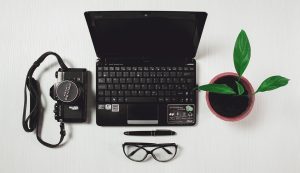The Ultimate Guide to Becoming a Photoshop Designer
Photoshop is a powerful tool used by graphic designers all over the world. Photoshop designers are experts in creating and manipulating images, integrating them with other graphics and producing stunning visuals that grab the user’s attention. Becoming a Photoshop designer is easier than you might think. It requires dedication and practice but, in the end, the results will be worth it.
In this guide, we will cover everything you need to know to become a Photoshop designer, from the basics of digital imaging to advanced techniques that will make you stand out from the crowd. So, let’s get started!
Getting started – The basics of digital imaging
Before you start, it is important to understand the basics of digital imaging. Digital imaging is the process of converting physical images into digital formats, and then manipulating them to create new images. There is a lot to learn about digital imaging, but here are a few basic concepts to get you started:
Understanding Image Types: There are several types of images that you will come across as a Photoshop Designer. These include raster images, vector images, and 3D images. Each image type uses a different type of format, resolution, and color space.
Resolution:The resolution of an image refers to the number of pixels in an image. The higher the resolution, the more detail an image will have.
Color Space: Color space refers to the range of colors that an image can display.
Raster Image Editing: Raster images are images made up of pixels that represent colors. In Photoshop, you can edit raster images by adding, removing or manipulating pixels.
Vector Image Editing: Vector images are created using mathematical formulas that create shapes, lines, and curves that can be edited without affecting the image quality.
3D Image Editing: Photoshop can manipulate 3D images too, allowing designers to create complex shapes and renders that look lifelike.
Learning Photoshop Tools and Techniques
The next step is to learn the essential Photoshop tools and techniques. This involves learning how to use the tools and techniques to manipulate images, create designs, and enhance visuals. Here are a few essential tools and techniques you need to know to become a Photoshop designer:
Layers and Masks: Layers are separate images or elements within a document that you can edit independently. Masks are the tools that allow you to apply selective modifications to an image.
Selection Tools: Selection tools allow you to select specific areas of an image to make modifications.
Filters: Filters are pre-designed effects that enable users to add an extra layer of creativity to an image.
Adjustment Layers: Adjustment layers are used to change the tone, color, and luminosity of an image made in Photoshop based on user settings.
Smart Objects: Smart Objects are layers that contain image data from raster or vector images.
Typography: Typography is the art and technique of arranging type to make written language legible, readable, and appealing.
Advanced Photoshop Techniques
Once you have mastered the basics of Photoshop, it’s time to learn advanced techniques. The best way to do this is through practice, experimentation, and learning from other designers. Here are some advanced Photoshop techniques that you should consider mastering:
Layer Styles: Layer styles are pre-defined effects that can be applied to any layer to create eye-catching visuals.
Masking: Masking is an essential visual editing technique that allows you to show or hide parts of an image, giving you greater control over the final composition.
Compositing: Compositing is the process of combining visual elements from multiple sources into a single, convincing image.
Color Correction: Color correction is the process of adjusting the tonal values of an image to provide color accuracy, reproduce natural skin tones, and correct other problems.
Special Effects: Special effects are techniques using Photoshop tools to create interesting, stylized images.
Conclusion
The journey to becoming a Photoshop designer can be both challenging and exciting. However, with dedication and practice, you can master the essential tools and techniques and showcase your creativity to the world. Remember, it is essential to keep practicing, experimenting, and learning to stay relevant and meet the ever-changing demands of the industry.
FAQs
Q. What is the most important tool in Photoshop for designers?
The most important tool in Photoshop for designers is the Layers panel. This tool allows designers to manipulate and organize different parts of the image, thereby providing them with the flexibility to make changes.
Q. What is the best way to learn Photoshop?
The best way to learn Photoshop is through practice, experimentation, and learning from other designers. Many online tutorials and courses are available for beginners and advanced users.
Q. Can Photoshop be used for web design?
Yes, Photoshop can be used for web design. Photoshop’s ability to create pixel-perfect designs makes it an excellent tool for web designers.
Q. What is compositing in Photoshop?
Compositing is the process of combining visual elements from multiple sources into a single image to create a convincing visual composition.
Q. Is Photoshop hard to learn?
Photoshop is not hard to learn, but it requires practice, experimentation, and a lot of patience. Many learning resources are available for beginners and advanced designers.






